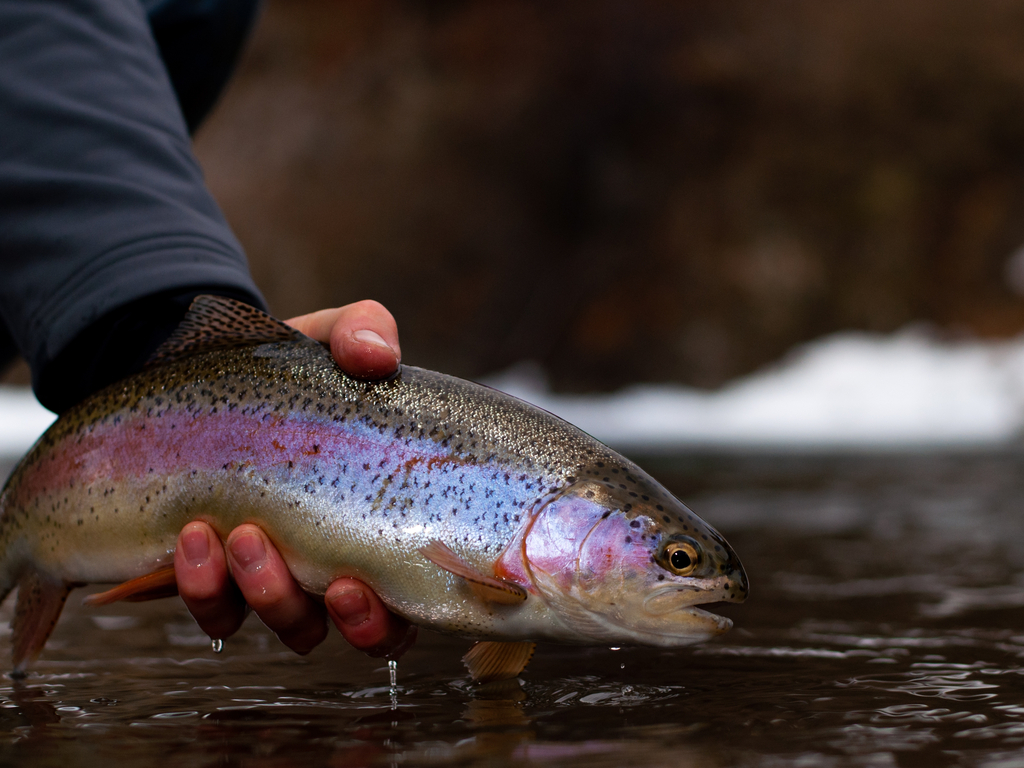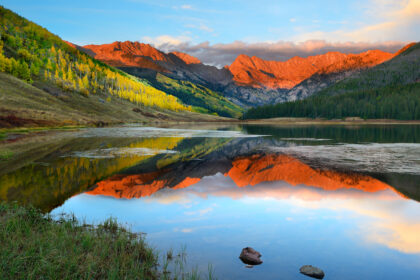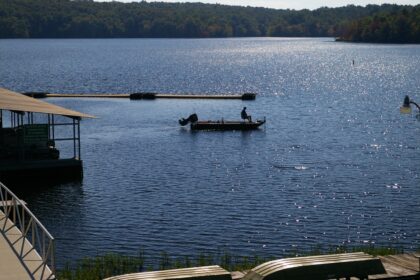Trout is one of the best species to fish because they remain active all year long. But, how can you catch trout in the winter? Fishing for trout in the winter is much different than fishing for them in the summer. You need to adjust your speed, where you look for trout, and the type of bait and lures you use to angle them.
In this article, we will cover everything you need to know in order to be successful in your wintertime trout fishing adventures. We will clue you in to where the trout hang out during the winter including what depth they are typically found. We will also give you hints on the best bait to use and how to optimize your spinner reeling techniques for winter trout fishing.
Additionally, we will discuss some important things to consider when fishing for brown trout and rainbow trout during the winter. Finally, we will leave you with five excellent tips on how to land the best trout catches during the winter.
Where Do Trout Go in the Winter?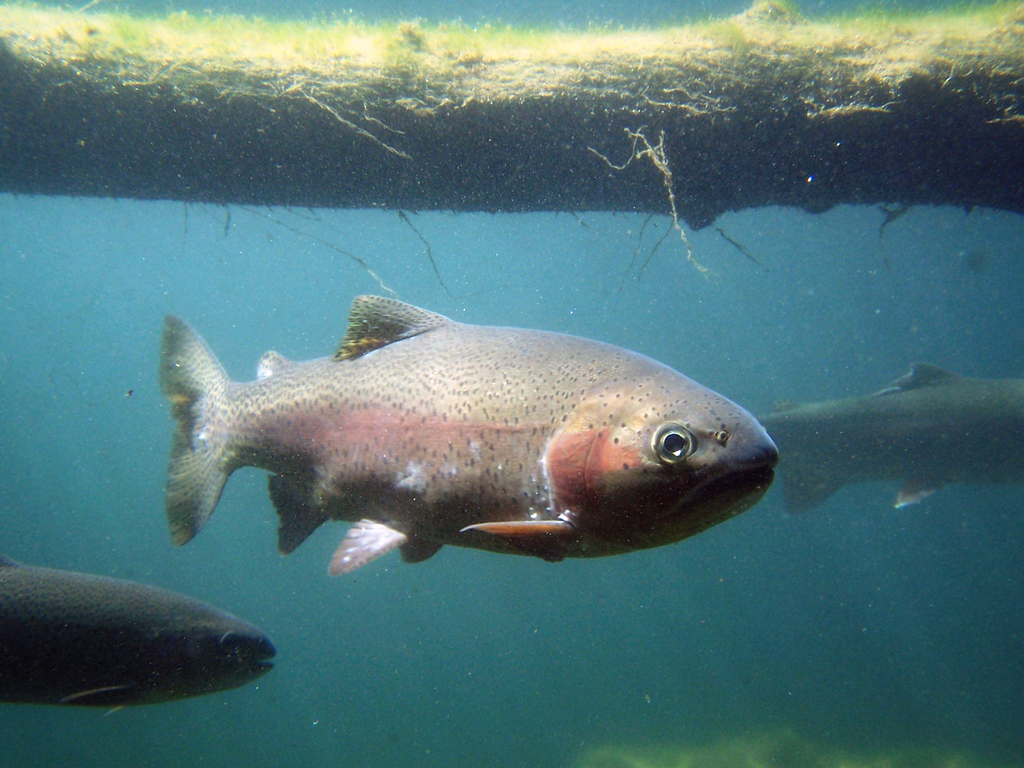
Trout are known for their tendency to gravitate toward cooler waters. In the summer, they like fast-flowing rivers and the cool depths of lakes. In the winter, they move to areas that have slower flowing waters such as deep pools.
They can often be found in areas with lots of large boulders and smaller isolated deeper pockets of water, especially within streams and rivers. In lakes and ponds, they are accustomed to spending their nights and days underneath the ice.
They are usually found in areas where ice cover does not constantly shift during the season due to fluctuations in temperature. Rather, they prefer spots where the ice is stationary and provides reliable coverage.
Trout Depth in Winter
Since the layering of different temperature waters is less dramatic in the wintertime than it is during the summer, trout can be found at shallower depths in lakes and ponds. With cold waters mixing a lot higher in the water column during the winter, the range of depths trout can be found is a lot larger.
In the summer, you have to fish at least thirty feet down in hopes of hooking a trout, but in the winter, you can target waters as shallow as ten feet and be able to land a decent catch. As the water starts to warm again in the spring, you’ll notice the trout move deeper.
Winter Trout Fishing with Spinners
Fishing for trout with spinners in the wintertime can land you more trout than you’ve ever dreamed of catching. There are a couple of tips to heed when using spinners in the winter though because trout tend to be more cautious since they don’t need to seek the shelter and protection of very deep waters like they do in the summer.
Even if you are targeting large trout, start off with small spinners so that you don’t alarm the trout. Likewise, use lighter-colored spinners to make it easy for them to see. Trout don’t have the best eyesight. The light levels are already low in the winter, so any help you can give them to draw attention to your lure is needed.
Cast your spinners into deep water. Even though the trout may be lingering more near the surface, they could still be hiding out at depth. By starting off deep, you will be able to cover the entire water column and more area for a better chance to snag some trout.
The best piece of advice for casting spinners in the winter is to wait before reeling your spinner in. Always cast beyond where the area where the trout are and wait for a couple of seconds before beginning to reel back.
Any prey they may be after might be slower moving in the colder water, so you want to mimic that behavior and not alarm the trout with fast-moving bait.
Best Winter Trout Bait
Depending on the bait regulations where you go fishing, there are a lot of options for good bait to use. If you like artificial bait and it is allowed, Powerbait is always a favorite among trout fishermen. Scented bait is also extremely useful in the winter. The cold waters will carry the scent farther and faster and attract trout immediately to your line.
For those who prefer using natural bait where it isn’t prohibited, minnows are one of the best baits to use for winter trout. These little fish are notorious for landing prize-winning trout in the wintertime.
Other good natural baits include crayfish, wax worms, fish eggs, red worms, and larvae of caddisflies, mayflies, and crane flies.
What Do Trout Eat in the Winter?
The majority of a trout’s diet is made up of small fish, crustaceans, and insect larvae. In the wintertime, crayfish and minnows are the most popular foods. This is because they can be found in abundance in ponds and lakes.
For trout that stick to the deep pockets and pools in streams and rivers, they rely on the insect hatches. Different species hatch during different seasons and the wintertime is the time for midges. Fly fishermen who angle for winter trout usually use midge flies to hook trout since they match the season’s hatch.
Fishing for Brown Trout in the Winter
Since brown trout are more readily found in rivers and streams, they will seek out deep pools to hang out for cover and safety during the cold winter months. If you are fishing in a river that has a hydroelectric dam, fishing near the dam is a great opportunity to catch brown trout. Deep manmade pools will exist near the facility more often than not.
Brown trout are more cautious than other trout species. This means you will have to be extremely patient when trying to lure them out of hiding. Use minnows for bait as those will be a primary source of their winter diet and remember to use a hesitant approach when reeling in your spinners. Fast, jerky movements may raise their suspicions and cost you a catch.
Fishing for Rainbow Trout in the Winter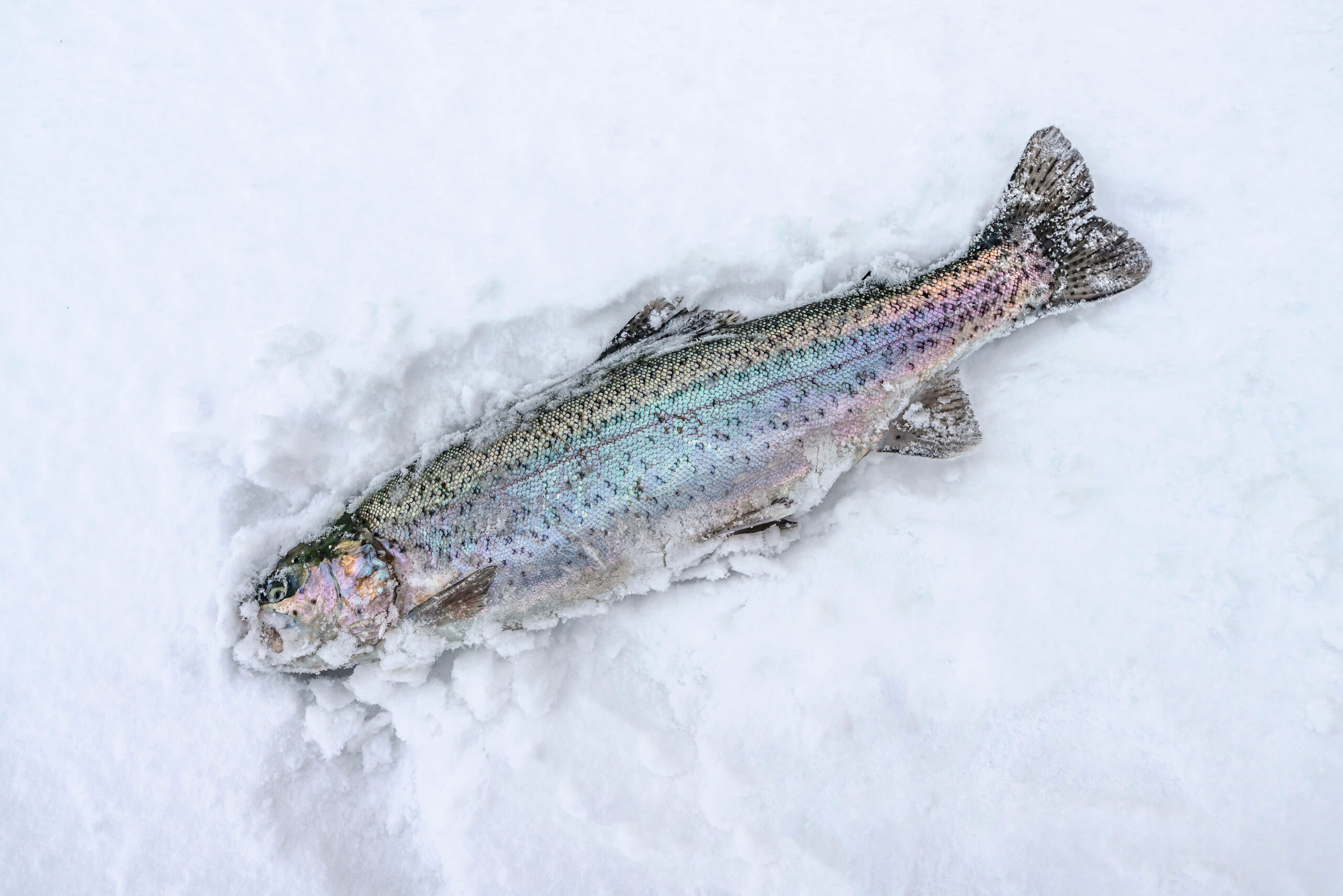
Rainbow trout will also seek cover in the wintertime and can be found either in deep pools or sheltered weedy areas of shallower water. Since the water in winter tends to be clearer, it is just as easy for the fish to see you as for you to see them. Approach cautiously and use natural movements when angling so as not to raise their suspicion.
Some rainbow trout tend to linger on the bottom, but a lot of rainbows can be found much higher up in the water column in the winter. These fish tend to be more aggressive so using highly attractive and active bait like minnows and crayfish is a great way to ensure a good catch.
When it comes to fishing for rainbow trout in the winter, don’t overthink it. If you find a spot that seems to be an obvious hideout for trout, then it probably is. Don’t be afraid to move around to different locations. The fish may become wise to your angling after a while and migrate to a different hiding spot.
Five Tips for Trout Fishing in the Winter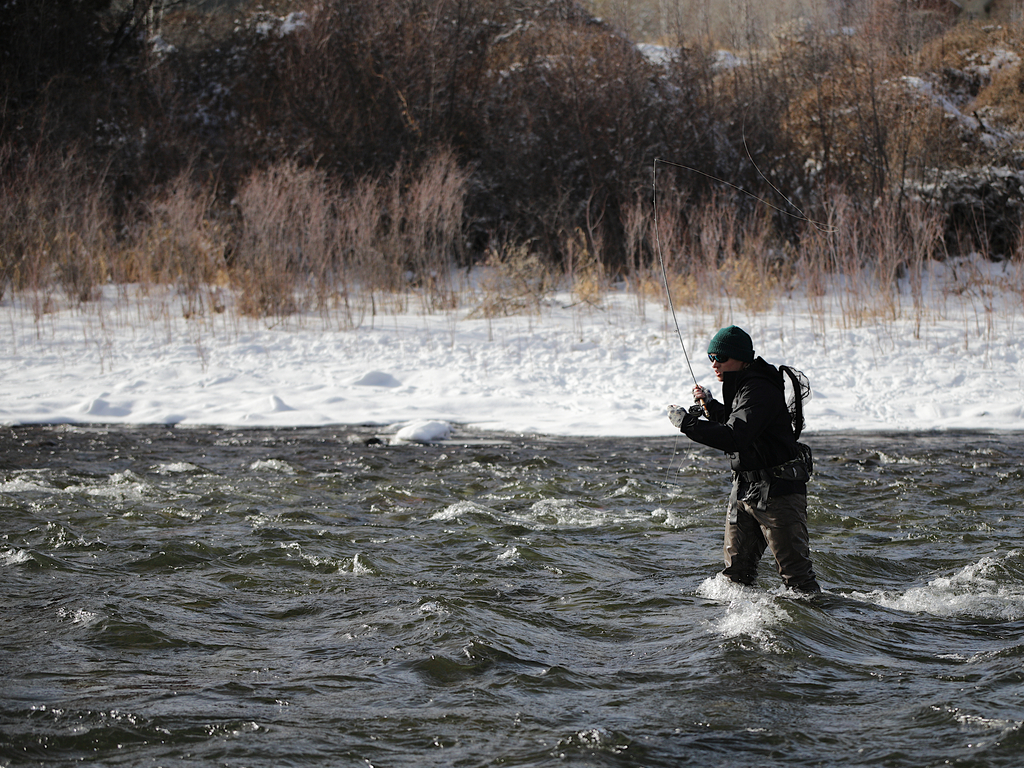
Of all the advice we can give for successfully landing trout in the wintertime, these tips won’t steer you wrong.
1. Know the location you are fishing
In order to have the most success, you need to know what natural prey exists here. You should also think about where the best hideouts for trout might be. Scout out the deep pools and seek advice from other fishermen who have fished the area.
2. Go slow
Being too aggressive and fast-paced with your movements, casting, and reeling will send up red flags to the trout. Match your pace with that of your surroundings and slow down.
3. Be familiar with your target species
Not all trout are alike. Some species are more cautious than others. On the other hand, some may be more aggressive in the winter. Research your target trout species to find the best approach. Then, look for the best hideout. And finally, use the most optimal bait.
4. Smaller is better
When it comes to insect hatches, midges are some of the only species to hatch during the winter. These insect larvae are far smaller than some of the summer hatch species. Use smaller lures and flies to attract the trout. Reducing the size of your bait does not mean you’re compromising the size of your catch.
5. Get a late start
If you are used to fishing for trout in the summer, most likely you’re up before the crack of dawn to hit the trout waters at their peak active time. In the winter, they are going to be slow-moving all day. Especially because the water temperatures are coldest in the early morning.
Sleep in and don’t bother to plan on casting your line until at least late morning.

